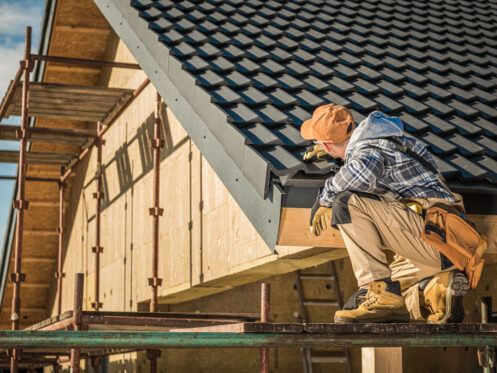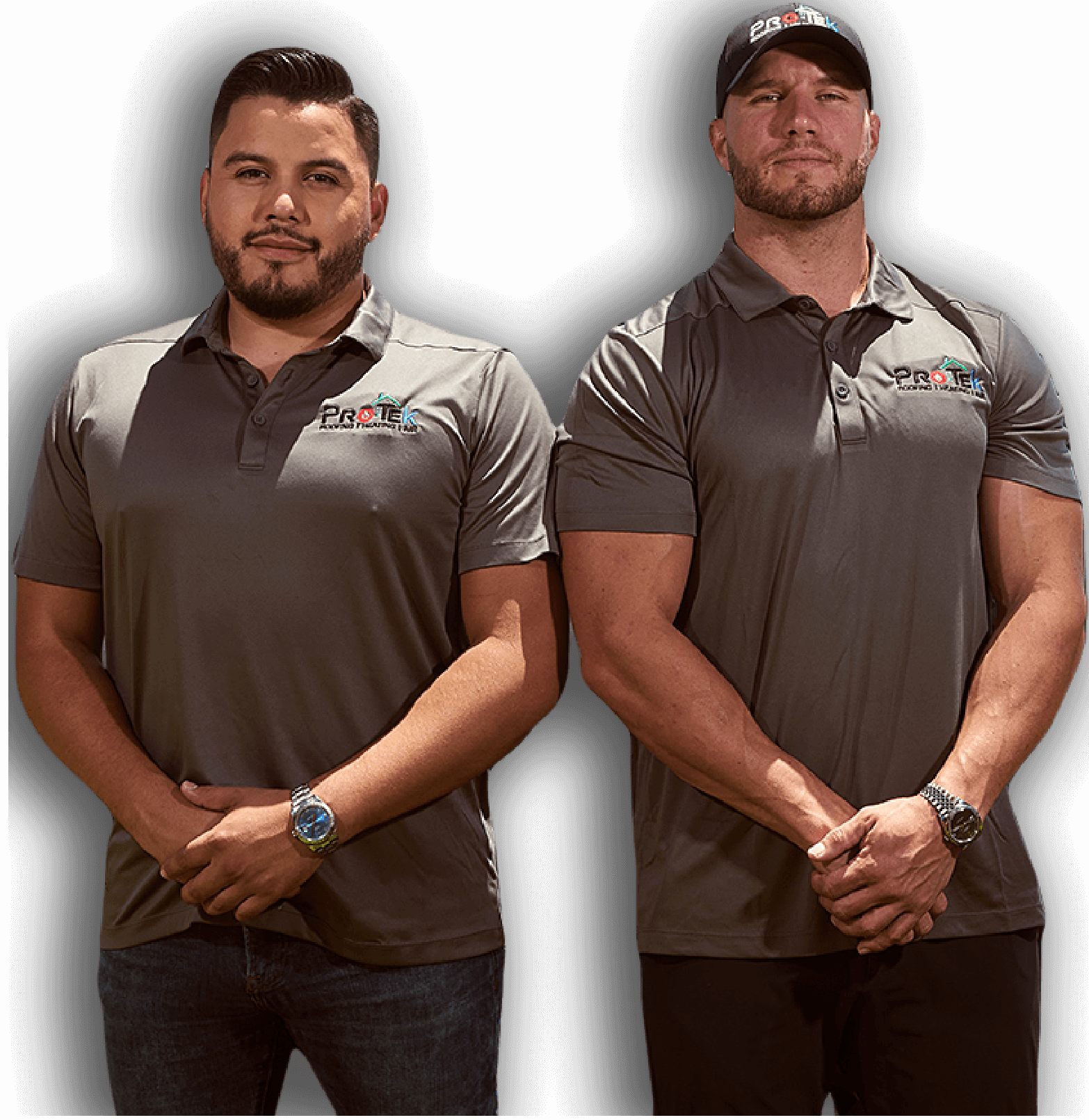Does your home need new gutters? If so, it can be tempting to do a DIY installation. If you do this, though, you run the risk of running into all kinds of problems. It not only puts your home at risk for water damage but can also result in lots of out-of-pocket expenses.
1. Incorrect Material Selection
There are many types of gutter materials to select from. Because of its low cost, resistance to corrosion and portability, aluminum is a great material for many home applications, but if you live right next to salt water, the salty air can cause pitting corrosion. Copper, with its lovely patina and long lifespan, is a popular material for high-end residences. Vinyl is inexpensive and easy to install, but it won’t hold up as well in harsh weather. Steel, being strong and durable, is an excellent choice for regions prone to experiencing severe weather. Zinc is more expensive than other materials, but it lasts longer and looks better. Choosing the wrong material, which affects the gutters’ efficiency and longevity, is more likely with a DIY installation. Seeking expert guidance can help you to select the right material.
2. Higher Likelihood of Seams
A seamless gutter installation is vital to preventing certain problems. Gutters with seams are more likely to leak, experience corrosion and have lots of debris accumulation. The most common causes of seams in gutters are incorrect measurements, misalignments and improper sealing. These issues become much more prominent with DIY installations. To avoid these seams, the gutters must be precisely cut for your home. This methodical procedure prolongs the life of the gutter system, keeps water damage to a minimum and maximizes water flow.
3. Faulty Foundation Protection
By diverting water away from a home’s foundation, gutters provide an essential protective function. They play a crucial role in protecting the home against soil erosion, floods in the basement and foundation damage. This is because the more water that pools at the foundation, the higher the chance of the foundation settling and cracking. This water pooling problem is much more likely to occur if you install the gutters yourself. Experts know how to precisely cut and install the gutters to eliminate standing water.
4. Unattractive Outcome
When you install gutters on your own, you run the risk of creating an ugly mess owing to gaps, uneven parts and exposed seams. In order to improve the home’s curb appeal, experts use painstaking measures that blend in with the home’s architecture. To eliminate any unnatural angles or abnormalities, they tailor the gutters to the home’s exact measurements. A well-coordinated appearance is the result of deliberate color choice and matching. Experienced installers also take the locations of downspouts into account. Not only do they try and choose subtle locations for placement, they will also make sure that there are enough downspouts to continue efficient draining during heavy rains.
5. Incorrect Pitch
When installing gutters, the pitch is very important since it controls how the water drains. Incorrect pitches caused by DIY installations will lead to water that travels in the wrong direction or stands without draining. Experts calculate the ideal slope with great care so that water flows efficiently downhill. They know exactly how to take the roof’s features into account and change the pitch to avoid problems like debris accumulation and overflow.
6. Ineffective Stormwater Drainage Placement
As part of a gutter system, downspouts divert water away from the base of the house. Their purpose is to protect foundations from soil erosion and other possible damages. For effective water diversion, the ground-level drainage system is as important as the gutters themselves. DIY storm drain installs can lead to water pooling near the foundation. Drainage experts will measure the property’s slope, examine the landscaping and determine the water flow patterns. This reduces the likelihood of water-related problems.
7. May Not Comply With Code
There are several building codes that gutters normally have to comply with. These codes usually relate to material standards, sizing requirements and installation methods. It is crucial to comply with these codes, which differ by location. Inadequate knowledge of these rules is a common cause of noncompliance in DIY installations. Expert installers know the rules and regulations in your area and can make sure your gutters are up to code. In addition to avoiding potential structural problems, staying in compliance with codes is paramount to keeping warranties valid.
8. Can Become a Timely Process
Expert gutter installers can complete a home’s gutter system far more quickly and accurately because of their knowledge and efficient workflows. It usually takes a few days for specialists to install gutters on a typical-sized property. Things like weather and the intricacy of the gutter system might affect the timetable. Because of inexperience and the possibility of errors, DIY installations often take longer than planned. This is because accurately measuring, cutting and aligning the gutters can be challenging for DIYers, which results in having to make numerous corrections. An additional factor that may cause delays is a lack of access to proper equipment.
9. Improper Sealant Application
Many parts of a gutter system need a sealant to keep water out and everything working as it should. These parts include junctions, corners, end caps and downspout connectors. Experts normally use sealants made of weather-resistant silicone or polyurethane because of their adaptability and durability. Improper application of sealants is common in DIY projects. Inadequate or too much sealant can cause leaks or an untidy look. Another factor that might reduce the sealant’s efficacy is improper surface preparation or neglecting to fix underlying problems. Professionals know how to avoid all these problems.
10. Insurance Implications
Correctly installed gutters protect the home against water pooling. This is pertinent to avoiding water damage and filing insurance claims. The fewer claims you file, the lower your premiums. Installing the gutters yourself increases the risk of negative outcomes. More specifically, it results in the gutters not being able to fully protect your home and a higher likelihood of filing insurance claims.
11. Won’t Have Access to Custom Solutions
When it comes to water drainage, no two homes are the same, and that’s why custom gutter systems are the way to go. Expert installers can adapt gutter systems to different roof pitches, landscape features and weather conditions. These customized solutions aren’t always available for DIY installations. Their materials, dimensions and designs can be beyond complex for the average do-it-yourselfer. With the help of a professional, you can be certain that your new water runoff management system will fit perfectly and work as intended.
12. Can Become Very Expensive
Although some people choose to install their gutters themselves out of a desire to save money, the end result might be more expensive than hiring a professional. Mistakes in component measurement, cutting or assembly can all lead to additional expenses. Lack of expertise may cause less-than-ideal decisions, and inadequate tools can force you to buy more stuff. Plus, do-it-yourselfers put themselves on the hook for future problems when they do their own installs without a warranty.
At Protek Roofing, Heating, Air & Solar, we make it easy to protect your home with effective gutters. We also specialize in roof repairs, HVAC maintenance and air duct cleaning. Give us a call now to learn more about the benefits of a professional gutter installation in Tampa, FL.




